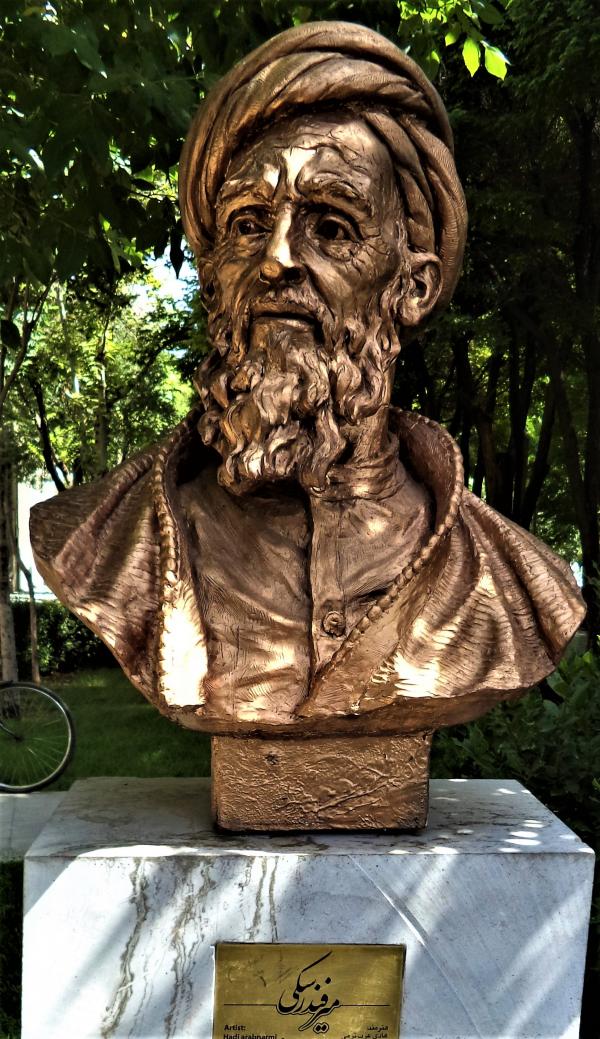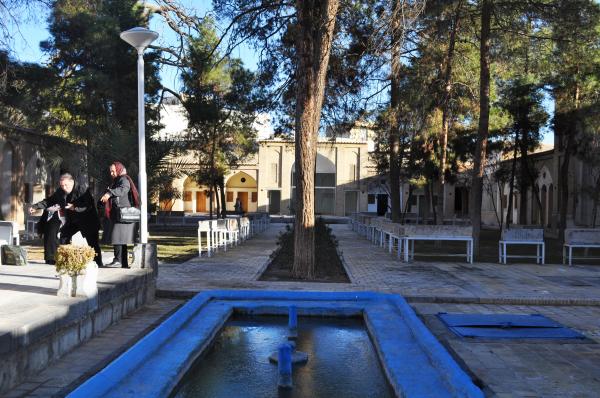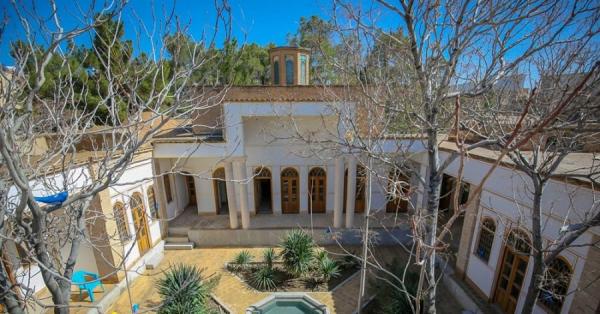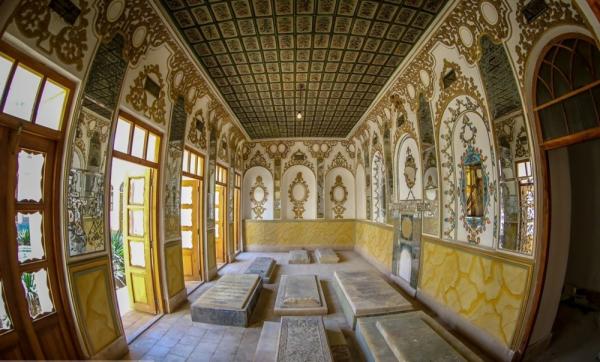Abulqasem Mirhosseini Fenderski mystic and scientist of the Safavid era

 Mirfendersky
MirfenderskyAbolghasem Mirfendersky He is one of the great scientists of the Safavid era, whose family was one of the great Sadats of Astrabad. He is considered one of the professors of the Isfahan school and one of the contemporaries of Mirdamad and Sheikh Baha'i.
A summary of Mirfendersky's biography:
Full name: Maulana Abulqasem bin Abutaleb Mirhosseini Fendersky
Date of birth: 942 solar
Place of birth: Fendersk, Gorgan, Iran
Reason for fame: scientist and sage
Period of life: Safavid
Death: 1019
Burial place: Takht Folad, Isfahan
 Summary of Mirfendersky's biography
Summary of Mirfendersky's biographyBiography of Mirfendersky:
Maulana Abulqasem bin Abutaleb Mirhosseini Fendersky was born in the city of Fendersk. He learned the basics of science in the same area, but later went to Isfahan to continue his studies with Allameh Chalabi Beyk of Tabrizi. He considers himself one of the students of Afzaluddin Mohammad Turke Esfahani, who learned wisdom and science from him, and after that he started teaching what he had learned in this place.
The father and grandfather of this mystic were among the elders of Sadat of Estrabad, his grandfather Mir Sadr al-Din had a property in Fendersk district in the cities of Estrabad, and after the accession of Shah Abbas I, he entered the throne. His father, Mirzabek, was also a member of Shah Abbas' government and was respected there.
Mirfendersky in India:
Apparently, the intellectual and scientific environment of Iran at that time was not very suitable for the freedom-seeking spirit of this scientist, that's why he traveled to India with professors like Chalabi Beyk Tabrizi to learn science.
At that time, Akbar Shah had flourished India both economically and socially, that's why many people from other parts of the world went to this country. The diversity of religions can be seen in this country and they were far away from many religious and sectarian prejudices, that's why people lived in complete freedom of thought and security.
Apparently, Mirfendersky's first trip to India took place in 1015 AH, accompanied by Ohadi Belyani.
Mirfendersky's return to Iran:
According to what Ohadi states, when Mirfendersky arrived in India, he approached the institution of Mirza Jafar Asif Khan, who himself was one of the poets and writers who emigrated to India. Asif Arya obliged himself to respect his condition and provided the means for his return to Iran.
Mirfendersky's second trip to India:
After a short period of time after returning to Iran, Mirfenderski left for India again and first went to Gujarat and then to the Deccan. Based on what Ohadi wrote between 1021 and 1024; After this date, Mirfendersky continued to travel to India until the end of his life, and it seems that he met that king once in 1037 and again in 1046 on the introduction of Shahjahan's vizier Abul Hasan Isfahani.
 Mirfendersky's travels
Mirfendersky's travelsMirfendersky in Iran:
Mirfenderski was also respected in Iran, based on what Nasrabadi says, when he was returning to Isfahan from India, Shah Safi went to see him.
Descendants of Mirfendersky:
Not much is known about the personal life of this sage and no one knows who his survivors and children are. Among his descendants, only the famous Ibn Mirzabek Esa, who is considered one of Allameh Majlisi's students, was a virtuous man and a poet. The survivors of this family have been respected Sadats of Estrabad region until recently.
Mirfendersky's contemporaries and students:
Mirdamad and Sheikh Bahai were among Mirfenderski's contemporaries, and Mullah Sadegh Ardestani, Mohammad Baqer Sabzevari, Agha Hossein Khansari, Mirza Rafiai Naini and Mlarjab Ali Tabrizi were among the students of this scientist.
Some consider Sadr al-Din Shirazi, one of the great sages of the Safavid era, as one of Mirfendersky's students. Of course, Sadr al-Din did not name this master in any of his works, even though he respects two other masters, namely Mir Damad and Sheikh Bahai, in his explanation of the sufficient principles.
Mirfendersky's impact on Indian culture:
Some people believe that the thoughts of this scientist were influenced by the cultural and intellectual environment of India. It seems that some of his philosophical reflections were formed in the context of the scientific debates of that period in India.
According to what the author of the book “Primary School of Religions” says, Mirfendersky interviewed the students of Azarkivan in India. This book talks about some Azarkivanians who are considered to be Mir's friends and relatives. But this connection between Mirfendersky and Azarkivan's students can be rejected in two ways, because:
From the works obtained from Mir, there is no trace of Azarkivan's thoughts and terms of the special words of this group.
Mirfendersky's name is not mentioned in any of the other works and compositions of this group.
Mirfendersky characteristics:
As mentioned, there is not much information about Mir's personal life, but the expressions and titles that appear on his tombstone show that he was highly respected and honored during his lifetime, not only in wisdom and official sciences, but also in Other divine teachings have also had their way.
Another reason for his popularity among the people of that time is related to the strange stories and various honors attributed to him.
The precision of opinion, strength of mind, moral courage, piety and free-spiritedness of this scientist can be obtained from stories about his intelligence, self-esteem, readiness to answer and recklessness in replying to the criticisms of princes and kings.
It is said that one day in his assembly, a problem related to the science of geometry was raised based on the opinion of Khwaja Nasir al-Din Tusi.
Mirfendersky gives a proof about this issue and asks if Khajah gave this proof.
They answered no!
After that he gave several arguments following the same argument and repeated his question, their only answer was the same as mentioned at the beginning.
Based on the information about his status in the tazkirehs and books of Rizal, it is clear that he was very simple and unpretentious in his personal life in addition to being respected scientifically and mystically. He avoided fame and formal officials and did not care about appearance and had no qualms about hanging out with the people of Kuche Bazar.
 The house left by Mirfendersky
The house left by MirfenderskyMirfendersky, an expert in various sciences:
Mirfendersky had something to say in various sciences such as geometry, mathematics and chemistry, and some of these topics are attributed to him. Among the works that are available from him, as well as the intellectual and philosophical views of his students and their writings, it is clear that Mirfenderski was one of the masters of Hikmat Masha and taught Ibn Sina's books.
Mirfendersky's works:
A few short treatises on scientific and philosophical topics remain from Mirfendersky, some of which are mentioned below:
The Persian treatise on Sana'i, known as the facts of Sana'i:
This work is known as the most important treatise of Mir, who considers industry in a very broad sense and meaning everything that is connected to the appearance and achievement of the rational and active powers of a person. This treatise has 24 chapters and a conclusion that refers to the extent of industry, its types, the relationship of different industries with each other and their benefits, etc.
Message in motion:
It is a brief text in Arabic in 5 chapters defining movement and its types and stating that every movement needs a stimulus and movements should generally start from a single stimulus which is the first stimulus and does not have a stimulus itself. Mir wrote this treatise from the point of view of Masha's method and in it he rejected and denied the theory of Platonic ideals. Selections from this treatise with useful margins have been published by Jalal al-Din Ashtiani in selections of the works of divine sages of Iran (24).
treatise on suspicion:
This treatise is actually a letter written by Mirfenderski in response to Agha Mozafar Kashani's question about doubting the essence. In this letter, it is spoken in the way of the Mashaites, who, unlike the Ishraqis, are skeptical about the essence.
treatise in alchemy:
This treatise is available in Farsi with names such as the four pillars of the treatise in Zaibaq, Kebrit and Bab al-Asghar. A poem in Arabic is also attributed to him in Alchemy.
Margins on Jog Basht:
This treatise is in fact a text that Mirfendersky brought in the margin of a book in the Indian mysticism and wisdom that was translated into Persian during the time of Akbar Shah. The original of this book is called Leghoyuge and Asishtehe.
The philosophy mentioned in this book; The same thought is absolute existential monotheism, which is considered one of the important philosophical and mystical schools of India, and its prominent representative is Shankara (Hindu philosopher and thinker). Mirfenderski also wrote a dictionary for the Jog Besht book called Kashf al-Lahag Jok, copies of which are available both as an appendix to the book and separately.
Other works:
Safavid History, Al-Muzla's research and some other treatises and other writings of his are seen in some tazkirahs and translation books that are registered in his name, but no traces of them have been found so far.
Death of Mirfendersky:
The death of this scientist dates back to 1050 in Isfahan. He was buried in the same city in Baba Ruknuddin's mausoleum in a place known today as Takht Foulad.
Mirfenderski's tomb has always been respected in Isfahan so that people used to visit it. According to what is said, after his death, according to his will, his books will be transferred to the royal library of Shah Safi.
 Mirfenderski tomb in Isfahan
Mirfenderski tomb in IsfahanMirfendersky's poems:
Mirfenderski is quoted in most of Ashadi's tazkirehs, but what is left of him are two odes, a few quatrains and a few fragments. His most famous poem is as follows:
It is pink below and above
The lower face if with the ladder of knowledge
On the upper river, the same with the principle of independence
John, if not, you are under this old wheel
These bodies are always alive and standing
No matter what it is, he should be treated first
Intellect is a witness to our claim
You can get these qualities from the sun
It is clear and you are shining and alone
The form of reason that was endless and eternal
With all and without all sets and unity
Jan Alam Goyimesh, the relation between the life of knowledge and the body
You are both hidden and visible in the heart of every particle
compilation: Cover biographical section






